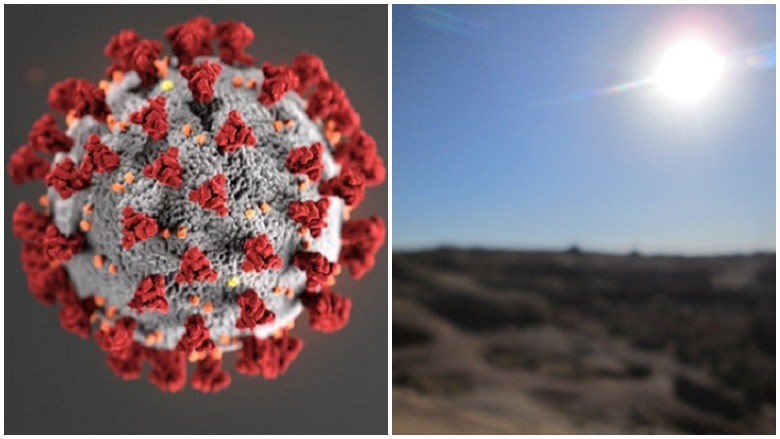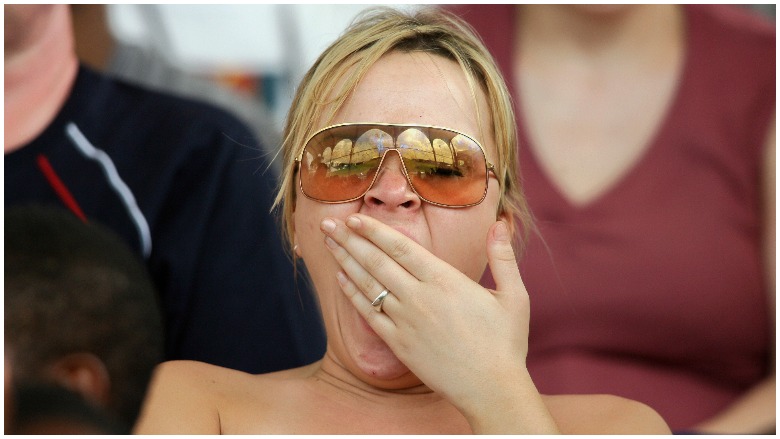
U.S. Military/(Flickr/Doug McCaughan) Fatigue can sometimes mimic the onset of heat exhaustion.
The longer the coronavirus pandemic stretches, the more health agencies such as the Centers for Disease Control and Prevention are able to help the public distinguish between coronavirus symptoms and symptoms of other illnesses, including heat-related illnesses.
In the summer heat, fatigue, which is also a coronavirus symptom, can also represent the onset of heat exhaustion, an illness that could lead to other dangerous health events such as heatstroke.
As hospitals prepare for more coronavirus cases and emergency resources are stretched thin, it’s important to be able to distinguish between the two and do what you can to avoid heat-related illnesses.
Heat-Related Illnesses Can Sometimes Mimic COVID-19 Symptoms
Fatigue is a symptom of both coronavirus and heat exhaustion.
Heat exhaustion, according to the Mayo Clinic, is a heat-related syndrome that occurs after either long-term exposure to high temperatures or short-term exposure to high temperatures under physical exertion. Heat exhaustion occurs when the combination of the outside environment (high temperatures with or without humidity) and internal temperature (which is supposed to remain around 98.6 degrees Fahrenheit) is so high that the body becomes unable to cool itself.
Untreated heat exhaustion can lead to heatstroke, which can be fatal. According to the Mayo Clinic, “Heatstroke requires immediate medical attention to prevent permanent damage to your brain and other vital organs that can result in death.”
In states with high heat and equally high numbers of coronavirus cases, such as Florida and Georgia, it can be difficult to tell the difference.
For example, in Georgia’s Forsyth County, local news station WSB-TV reported that doctors noticed high numbers of patients showing up to emergency rooms concerned they had coronavirus when actually had heatstroke. Dr. Vida Reklaitis said, “Heatstroke can present as fatigue, exhaustion, it can present as nausea, vomiting. Those are all COVID symptoms as well.”
How To Tell The Difference Between Fatigue From Coronavirus & Fatigue From Heat Exhaustion

GettyResearch shows that fatigue can be benign or the sign of a more serious issue.
Fatigue on its own can be the symptom of many things, including not getting enough sleep or eating a very large meal.
The CDC describes fatigue (represented as “tiredness or weakness”) as just one of several symptoms of heat exhaustion, which also causes heavy sweating; cold, pale and clammy skin; a fast or weak pulse; nausea or vomiting, muscle cramps; dizziness; headaches and a loss of consciousness (or passing out). The Mayo Clinic also includes the symptoms of low blood pressure upon standing and the presence of goose bumps in the heat.
In comparison, coronavirus symptoms include fatigue, sore throat, fever or chills and muscle pain or body aches, as well as symptoms from either/both the respiratory (cough, shortness of breath or difficulty breathing, headache, a loss of taste or smell and nasal congestion or runny nose) and gastrointestinal (nausea, vomiting or diarrhea) systems, according to the most recent CDC list of symptoms. According to a July 3 CDC Morbidity and Mortality Weekly Report, more than two-thirds of people (69%) who tested positive for the disease experienced fatigue.
One of the best ways to determine if your fatigue is from heat exhaustion or coronavirus is to assess the following:
- How much time you spent outside/in hot weather
- How much you exerted yourself in hot weather
- Whether you have the presence of other coronavirus symptoms
Here’s How You Can Prevent Heat Exhaustion
One of the best ways to avoid having to make the distinction between fatigue from heat exhaustion and fatigue from coronavirus is to do everything you can to avoid ever experiencing a heat-related illness.
According to the CDC, older adults, infants and children, people with chronic conditions, those who are low-income, athletes (and especially those who perform outside) and workers who have physically demanding jobs that take place outside/without air conditioning are at a higher risk.
The Mayo Clinic advises people to do the following to prevent heat exhaustion:
- Avoid going outside during the hottest hours
- Stay hydrated with water to help your body sweat
- Wear sunscreen with an SPF of at least 15 to avoid sunburn
- Wear loose-fitting, lightweight and light-colored clothing to reflect the suns rays and allow your body to sweat, which helps you cool down
- Avoid leaving people and pets in parked cars, where temperatures can rise 20 degrees in ten minutes
The Mayo Clinic also advises that if you take medications that affect how your body regulates its temperature or you are in one of the high-risk categories, it may be wise to consult your doctor before being outside in extreme heat or undergoing any strenuous activity in hot weather.
READ NEXT: COVID-19: Studies Say An Upset Stomach Could Mean Worse Outcomes
